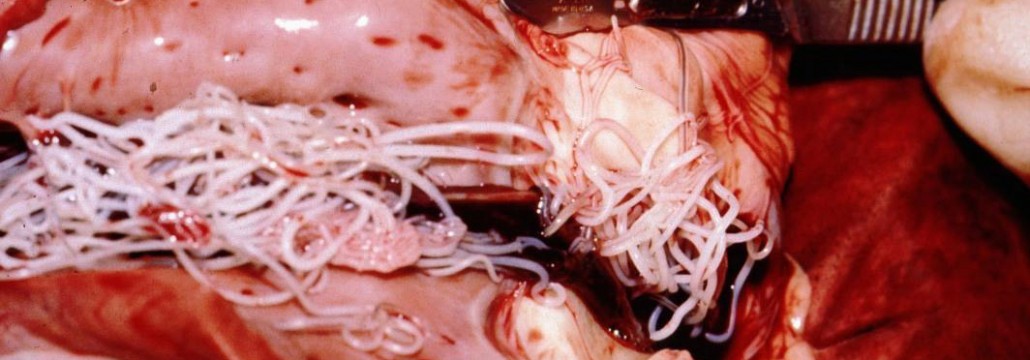Nothing Heartwarming about Heartworm
Heartworm Disease
Heartworm is a long, string-like parasitic worm that has the scientific nameDirofilaria immitis. It earns its common name by living in the host’s heart, lungs, and blood vessels. Heartworm can cause severe lung disease, heart failure, organ damage, and death. It is transmitted only through mosquitoes to a variety of species including dogs, cats, ferrets, wolves, foxes, ferrets, sea lions, and in rare instances, humans. Heartworm can affect any breed of dog or cat.
Heartworm infects animals all over the world. Once inside an animal, a heartworm can live five to seven years, and grow up to twelve inches long. Adult heartworms look like strands of cooked spaghetti.
Mosquitoes spread heartworm to the host animal. When a mosquito bites the animal, it transmits infected larvae through the bite wound. Once inside an animal, it takes six or seven months for the larvae to mature into adult heartworms. These adult heartworms mate and the females release the offspring, called microfilariae, into the host animal’s bloodstream. Mosquitoes then ingest these microfilariae when they bite the infected animal, completing the lifecycle of heartworm.
The parasite lives inside a mosquito, and develops into infective larvae in 10 to 14 days. Microfilariae cannot become infective larvae without first passing through a mosquito. This means heartworm is spread only through mosquito bites and not by casual contact.
The presence of the parasites inside the heart and lungs causes a large degree of inflammation, and can severely interfere with blood flow. This can cause coughing, asthma -like signs, heart failure, weight loss, fluid build-up in the abdomen, or sudden death. If your pet develops heartworm, your veterinarian will do tests including chest x-rays and blood tests to determine how seriously it is affected. Treatment includes doxycycline and an injectable drug named Immiticde ℞ which is derived from arsenic. The treatment takes several months, and can also cause side effects.
For all these reasons, it is much better to just prevent heartworm in the first place.
Sources:
American Heartworm Society





